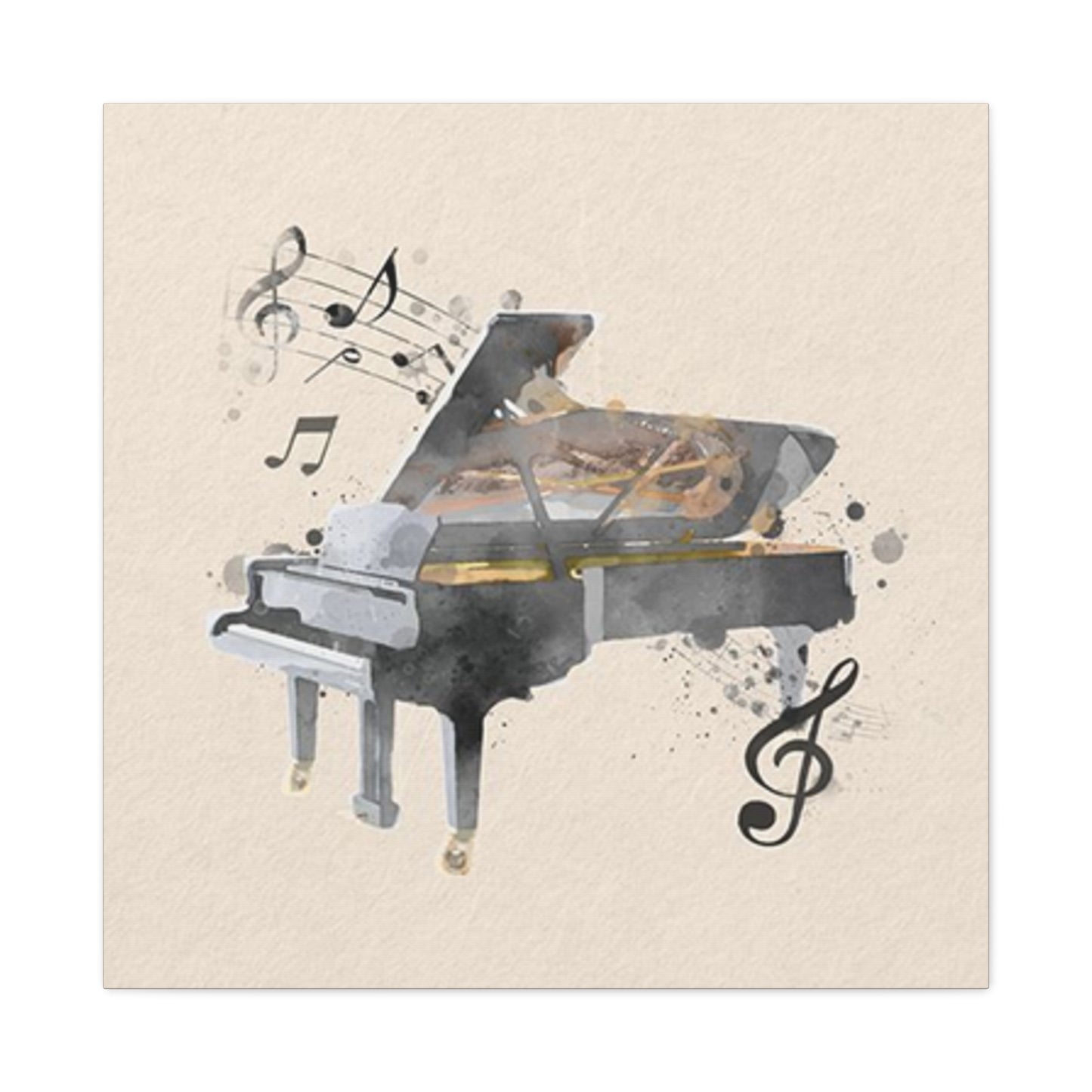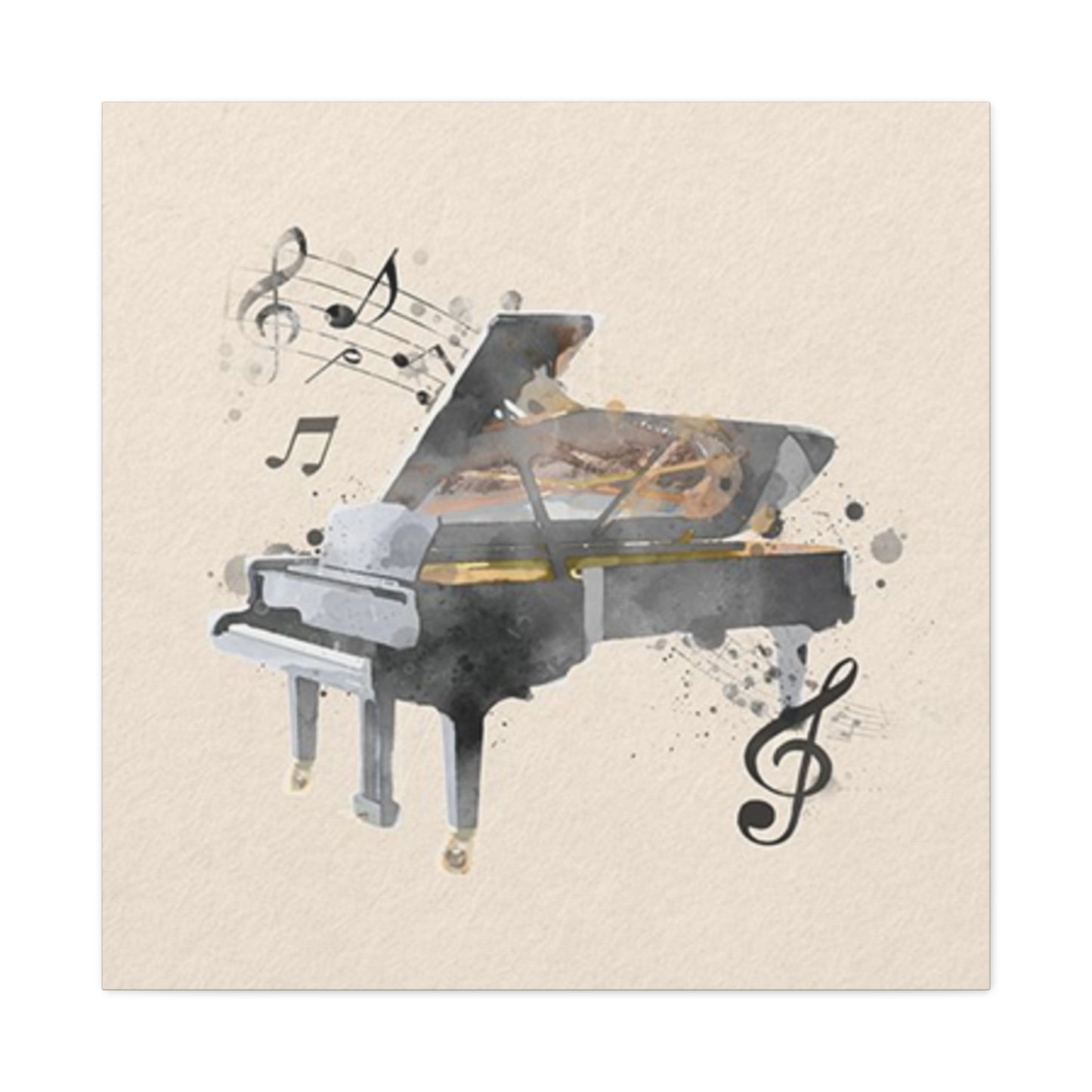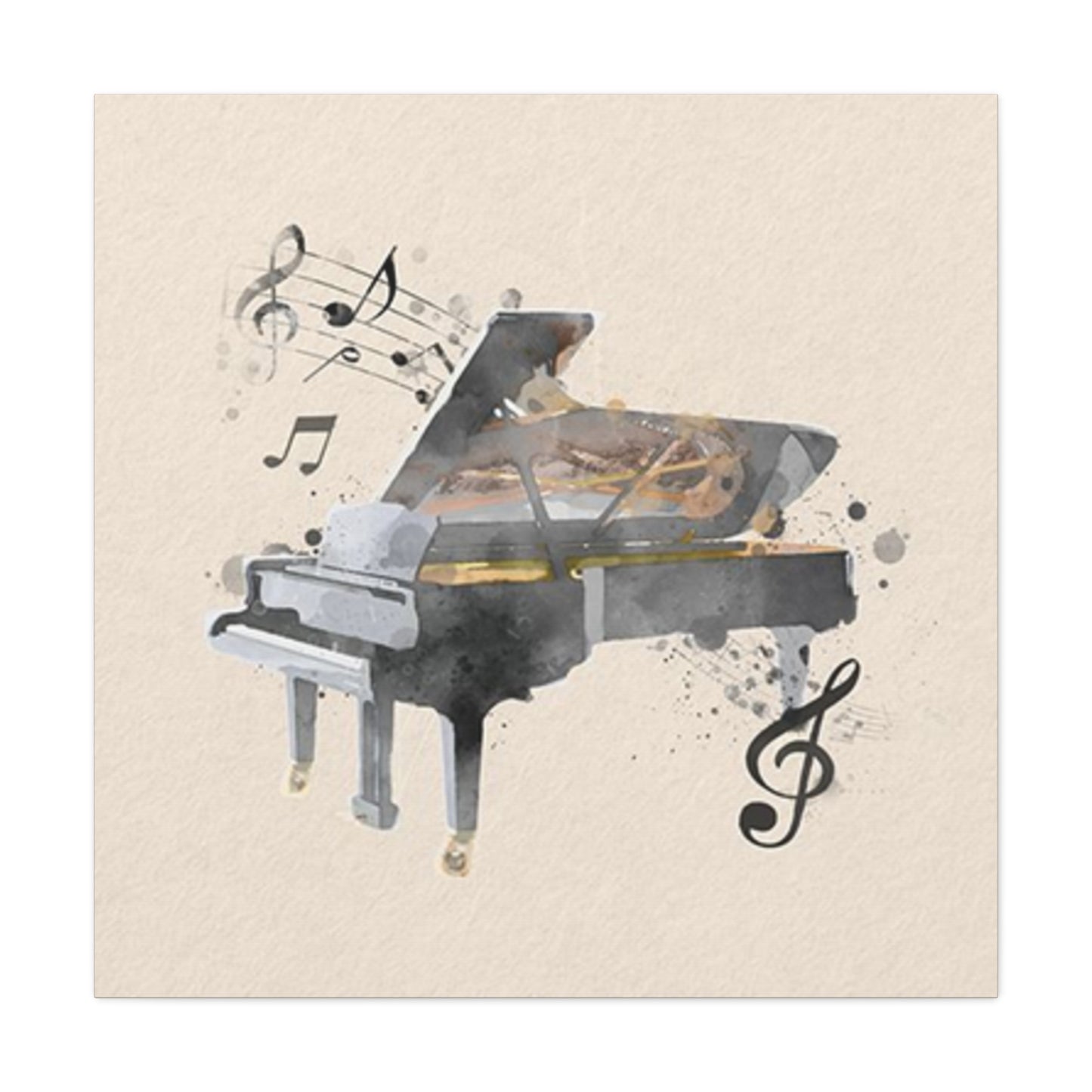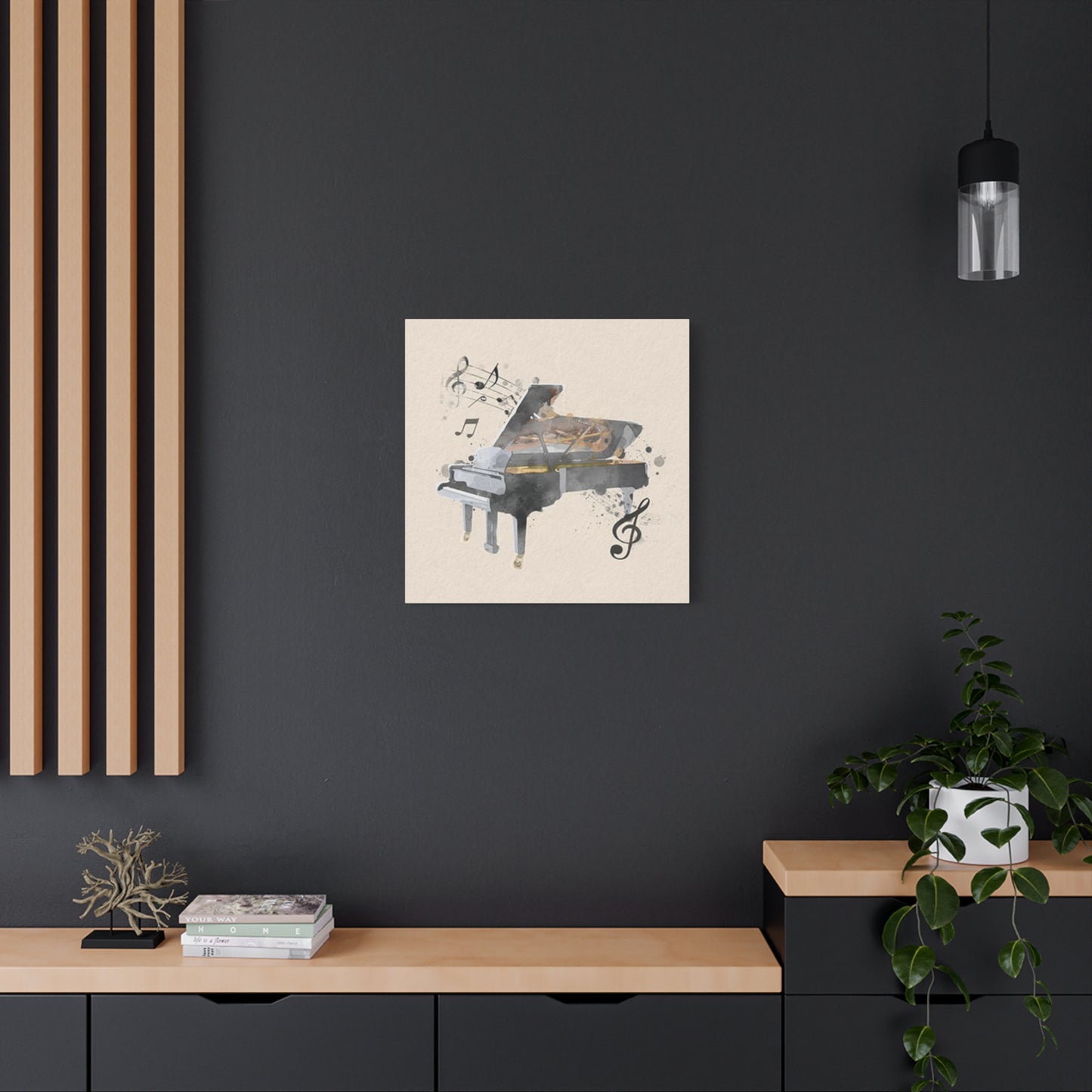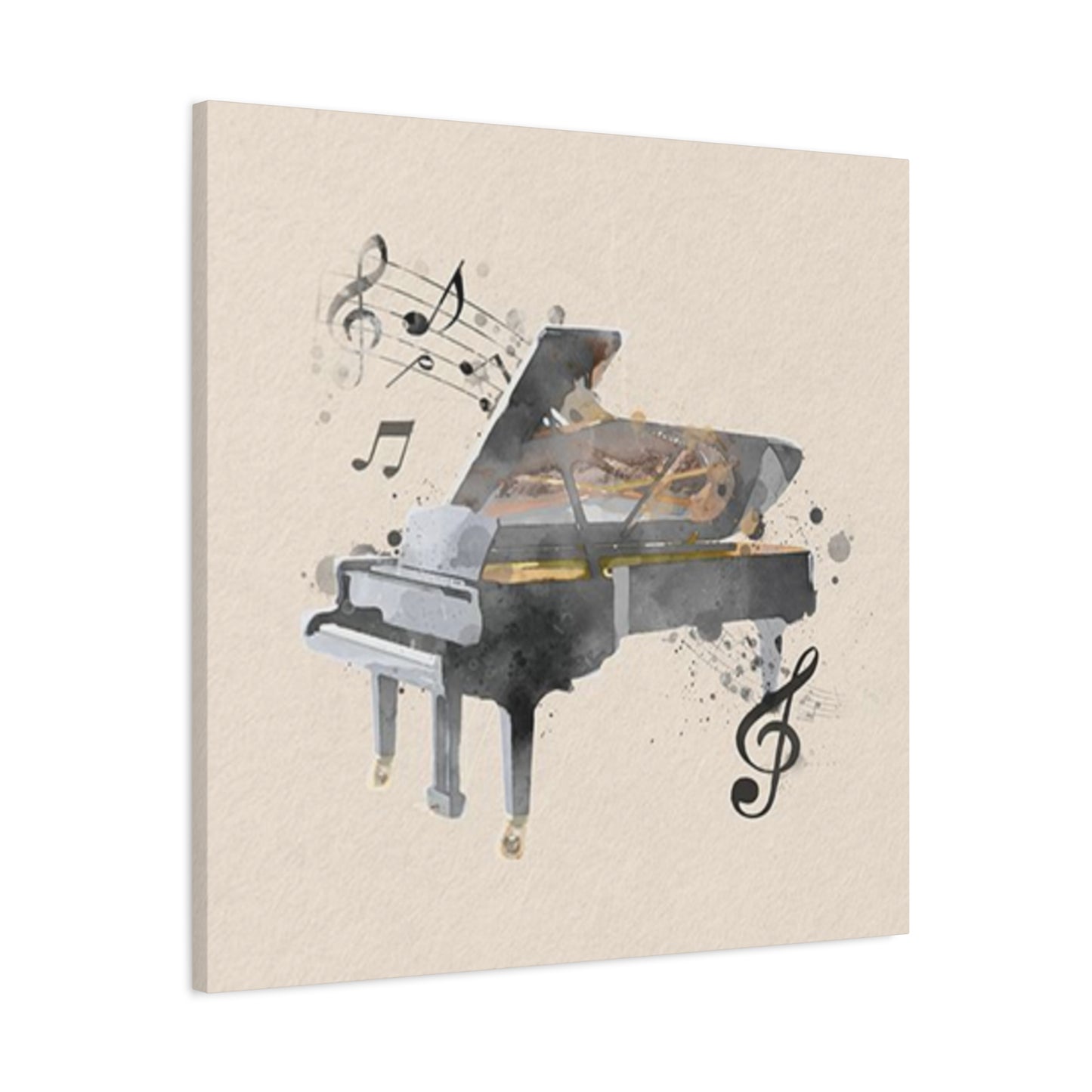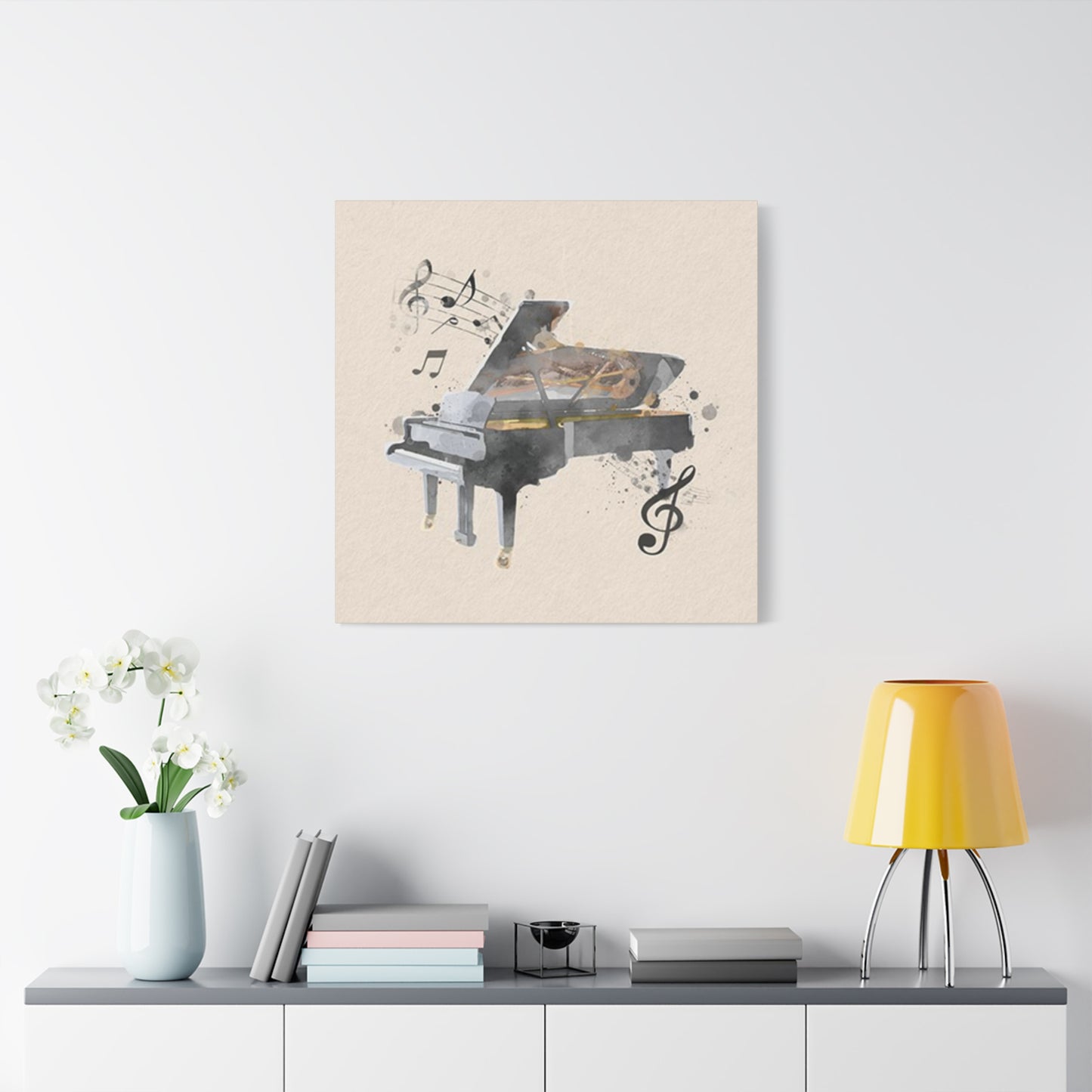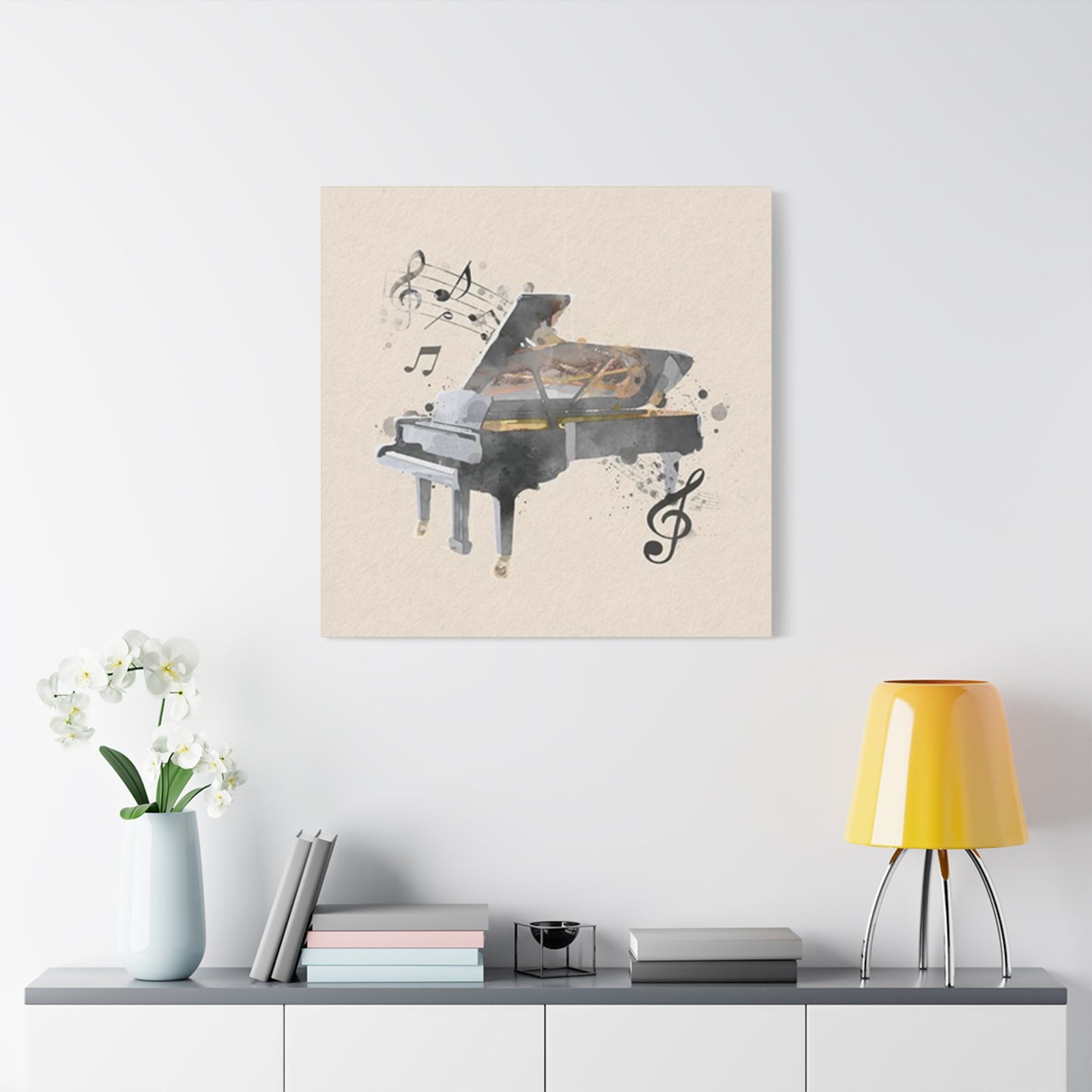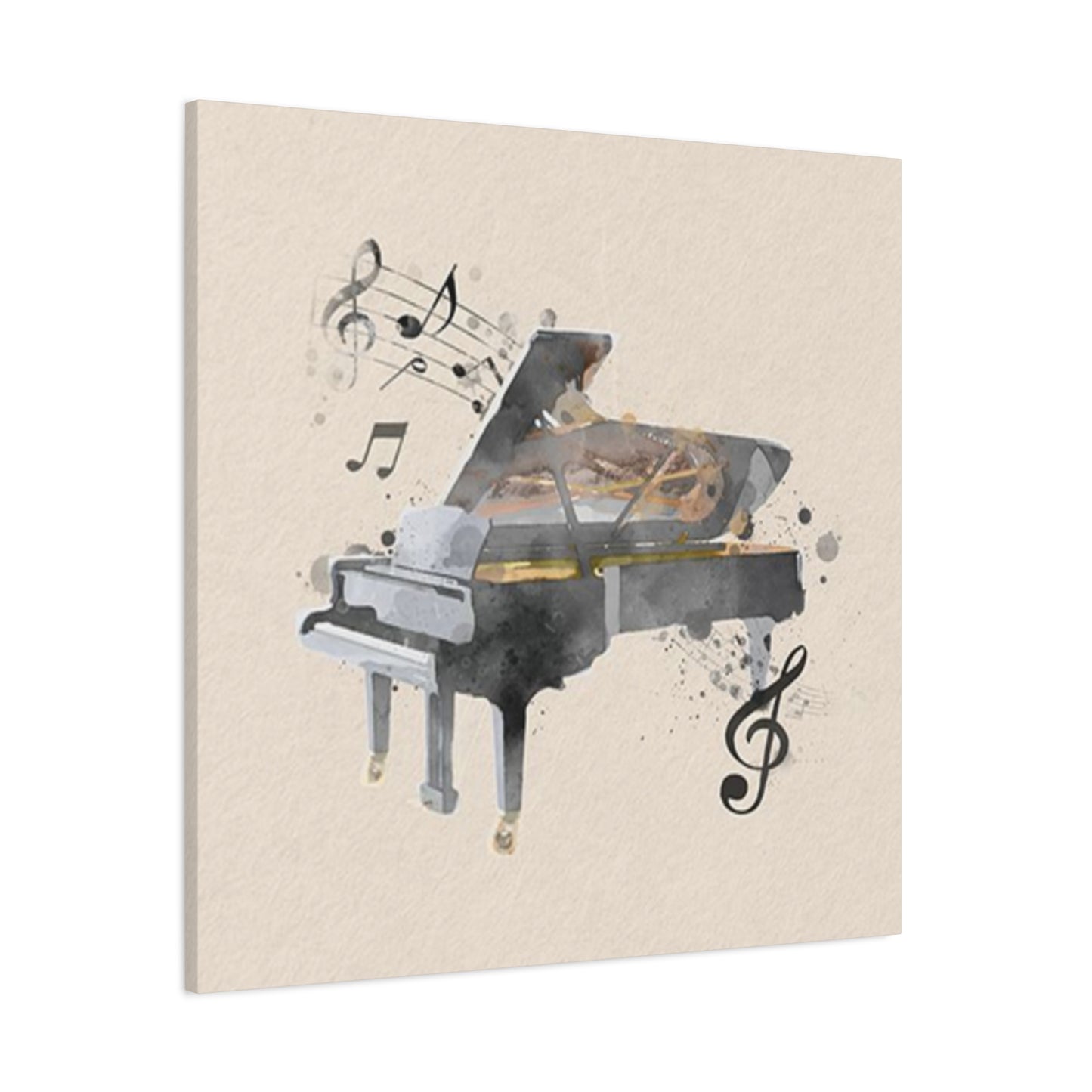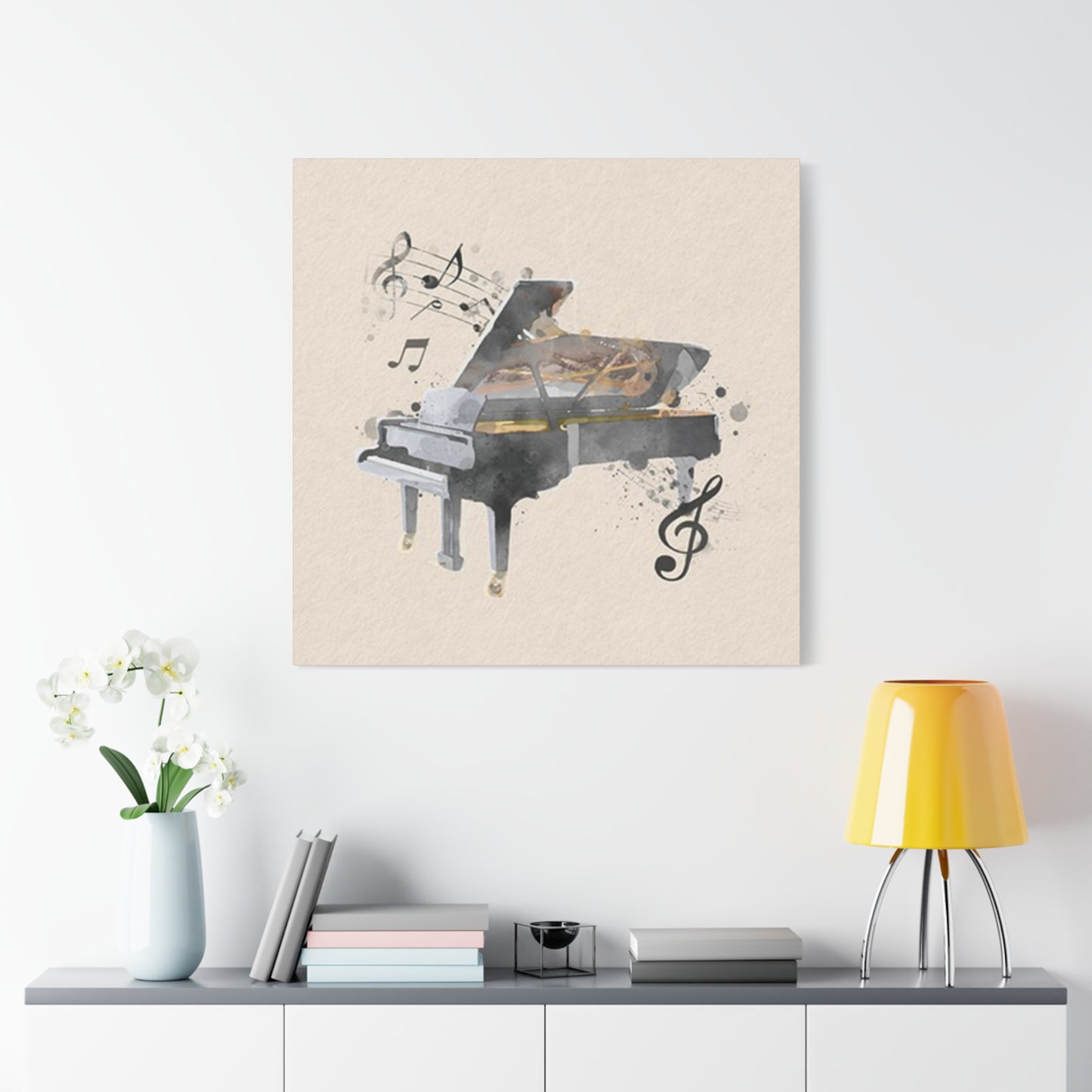Refined Rhythm: Grey Piano Wall Art Collection for the Modern Music Lover
The timeless appeal of piano-themed artwork combined with the sophisticated elegance of grey tones creates a perfect harmony for modern home decoration. Grey piano wall art represents a unique fusion of musical passion and artistic refinement that transforms any room into a sophisticated sanctuary. This comprehensive exploration delves into the world of monochrome musical artwork, examining how these pieces can elevate your living environment while celebrating the beauty of classical instruments through contemporary artistic expression.
Elegant Grey Piano Paintings for Wall Decor
Elegant grey piano paintings serve as the cornerstone of sophisticated home decoration, offering a perfect balance between artistic sophistication and musical appreciation. These carefully crafted pieces showcase the majestic beauty of pianos through various shades of grey, creating depth and visual interest that captivates viewers from every angle. The subtle gradations of grey tones in these paintings allow for versatile placement throughout the home, complementing both traditional and contemporary decorating schemes with equal grace.
The artistic interpretation of pianos in grey palettes brings forth an emotional resonance that speaks to music lovers and art enthusiasts alike. Professional artists often employ techniques such as chiaroscuro to create dramatic contrasts between light and shadow, highlighting the elegant curves and sophisticated lines of grand pianos. These paintings frequently feature pianos positioned in classical settings, with careful attention paid to the interplay of light across the instrument's polished surface, creating reflections that add dimensional depth to the artwork.
Contemporary grey piano paintings often incorporate elements of photorealism, capturing every intricate detail of the instrument's construction while maintaining the monochromatic color scheme that defines this artistic genre. The careful rendering of piano keys, pedals, and the instrument's distinctive silhouette creates a sense of authenticity that resonates with viewers who appreciate both musical craftsmanship and visual artistry. These pieces often feature subtle texture variations that simulate the different materials found in piano construction, from the smooth lacquered finish of the case to the precise engineering of the keyboard mechanism.
The versatility of grey piano paintings extends beyond their aesthetic appeal, offering practical benefits for homeowners seeking artwork that complements existing color schemes without overwhelming the visual balance of a room. The neutral nature of grey allows these paintings to serve as either focal points or complementary elements within a larger decorative scheme, adapting to changing decor preferences while maintaining their timeless appeal.
Artists working in this medium often explore themes of solitude and contemplation, using the piano as a symbol of creative expression and emotional depth. The monochromatic approach allows viewers to focus on form, composition, and emotional content rather than being distracted by vibrant colors, creating a meditative quality that enhances the peaceful atmosphere of any room.
Using Shades of Grey in Piano Art
The strategic application of various grey shades in piano artwork creates a sophisticated visual language that speaks to the complexity and depth of musical expression. Professional artists understand that grey exists not as a single color but as an entire spectrum of tones, each capable of conveying different emotions and creating distinct visual effects within a composition. The masterful use of these variations allows for the creation of artwork that appears simple at first glance but reveals layers of complexity upon closer examination.
Light grey tones often represent the ethereal quality of music itself, suggesting the intangible nature of sound waves and melodic progression. These lighter shades create areas of visual breathing room within compositions, allowing the eye to rest while simultaneously drawing attention to key compositional elements. Artists frequently use pearl grey and dove grey tones to suggest the delicate touch required for expressive piano performance, creating visual parallels between the gentle gradations of color and the subtle dynamics that characterize masterful musical interpretation.
Medium grey tones provide the structural foundation for most piano artwork, establishing the primary forms and shapes that define the instrument's recognizable silhouette. These mid-tones often represent the piano's physical presence, conveying its substantial weight and impressive scale while maintaining the refined elegance that characterizes the instrument. Charcoal grey and steel grey variations create depth and dimension, allowing artists to sculpt three-dimensional forms on two-dimensional surfaces through careful manipulation of value relationships.
Dark grey and near-black tones add drama and intensity to piano compositions, often representing the powerful emotional depths that can be expressed through musical performance. These deeper shades create strong contrasts that draw the viewer's attention to specific areas of the composition while simultaneously suggesting the profound emotional impact that piano music can achieve. The strategic placement of these darker tones often emphasizes the piano's keyboard, creating visual metaphors for the contrast between light and dark keys and the musical intervals they represent.
The psychological impact of grey variations in piano art cannot be understated, as different shades evoke distinct emotional responses from viewers. Cool grey tones suggest tranquility and sophistication, while warmer grey variations create feelings of comfort and intimacy. Professional artists often manipulate these subtle temperature variations to guide the viewer's emotional response to the artwork, creating pieces that not only represent pianos visually but also evoke the emotional experience of musical performance and appreciation.
Advanced artistic techniques involve the layering of multiple grey tones to create complex surface textures that simulate the various materials found in piano construction. The glossy surface of a piano's case might be represented through the use of lighter, more reflective grey tones, while the matte finish of internal components could be suggested through the application of deeper, less reflective shades.
Minimalist Grey Piano Canvas Prints
Minimalist grey piano canvas prints represent the perfect intersection of contemporary design philosophy and classical musical appreciation, creating artwork that embodies the principle that less truly can be more. These sophisticated pieces strip away unnecessary visual elements to focus attention on the essential forms and proportions that make pianos instantly recognizable and eternally appealing. The minimalist approach to piano representation allows viewers to appreciate the instrument's inherent geometric beauty while creating artwork that integrates seamlessly into modern living environments.
The aesthetic philosophy behind minimalist grey piano prints emphasizes clean lines, uncluttered compositions, and careful attention to negative surroundings within the artwork. These prints often feature pianos rendered with simple, elegant strokes that capture the essence of the instrument without unnecessary decorative elements. The use of grey as the primary color palette reinforces the minimalist approach, creating visual unity while avoiding the distraction that multiple colors might introduce to the composition.
Canvas printing technology has revolutionized the accessibility of high-quality piano artwork, allowing homeowners to enjoy museum-quality reproductions of minimalist designs at affordable prices. The texture of canvas material adds subtle depth to grey piano prints, creating surface variations that enhance the visual interest of minimalist compositions without compromising their essential simplicity. Professional printing processes ensure that grey tones are rendered with precision, maintaining the subtle gradations that are essential to effective minimalist design.
The scale considerations for minimalist grey piano canvas prints require careful planning to achieve maximum visual impact. Large-format prints can create dramatic focal points in contemporary living areas, while smaller pieces work effectively as part of gallery wall arrangements or paired installations. The minimalist approach allows these prints to function as both standalone statement pieces and components of larger decorative schemes, adapting to various spatial requirements and design preferences.
Contemporary minimalist artists often explore the relationship between positive and negative areas within piano compositions, using empty areas as active design elements rather than simply backgrounds for the main subject. This approach creates a sense of visual breathing room that enhances the contemplative quality often associated with both minimalist art and piano music. The careful balance between depicted forms and empty areas creates compositions that feel both complete and open to interpretation.
The printing quality standards for minimalist grey piano canvas prints must meet exacting specifications to ensure that subtle tonal variations are preserved throughout the reproduction process. Professional-grade archival inks and museum-quality canvas materials ensure that these prints maintain their visual integrity over time, resisting fading and deterioration that might compromise the careful tonal relationships that define effective minimalist compositions.
Abstract Grey Piano Wall Art Ideas
Abstract grey piano wall art opens up a world of creative possibilities that transcend literal representation while maintaining clear connections to musical themes and piano iconography. These innovative pieces allow artists to explore the emotional and conceptual aspects of piano music through non-representational visual languages, creating artwork that suggests rather than depicts the piano's physical form and musical capabilities. The abstract approach to piano-themed art encourages viewers to engage with the pieces on multiple levels, discovering personal interpretations and emotional connections that might not be immediately apparent in more traditional representational works.
Contemporary abstract artists working with piano themes often deconstruct the instrument's recognizable elements, reimagining piano keys as geometric patterns, sound waves as flowing lines, or musical notes as scattered compositional elements throughout the artwork. The exclusive use of grey tones in these abstract interpretations creates visual coherence while allowing for complex layering and textural experimentation that might be overwhelming in multi-colored compositions. This monochromatic approach encourages viewers to focus on form, movement, and emotional content rather than being distracted by color relationships.
Gestural abstract techniques applied to piano themes create dynamic compositions that seem to capture the energy and movement inherent in musical performance. Artists might use broad, sweeping strokes to suggest the physical motions of piano playing, or employ precise, controlled marks to evoke the discipline and technical precision required for masterful performance. The grey color palette allows these gestural elements to work together harmoniously, creating compositions that feel both spontaneous and carefully planned.
Geometric abstraction offers another compelling approach to piano-themed wall art, with artists creating compositions based on the mathematical relationships found in musical theory and piano construction. The regular patterns of piano keys might inspire grid-based compositions, while the instrument's proportional relationships could inform the creation of abstract geometric forms. Grey tones provide the perfect medium for these explorations, as the neutral palette allows geometric relationships to take precedence over color-based visual effects.
Textural abstraction techniques can create piano-themed artwork that engages viewers through tactile as well as visual means. Artists might build up layers of grey paint to create surface variations that suggest the different materials and textures found in piano construction, from smooth lacquered surfaces to the rough texture of internal felt components. These textural elements add dimensional depth to abstract compositions while maintaining clear conceptual connections to piano themes.
Mixed media approaches to abstract grey piano art allow artists to incorporate actual piano-related materials into their compositions, creating pieces that blur the boundaries between representation and abstraction. Sheet music fragments, piano wire, or small piano components might be integrated into grey-toned compositions, adding layers of meaning and authenticity to abstract interpretations of piano themes.
Combining Music and Monochrome in Grey Piano Art
The fusion of musical themes with monochromatic grey palettes creates a sophisticated artistic language that speaks to both visual and auditory sensibilities simultaneously. This unique combination allows artists to explore the conceptual relationships between music and visual art while maintaining aesthetic coherence through the disciplined use of grey tones. The monochromatic approach paradoxically enhances rather than limits the expressive potential of music-themed artwork, creating pieces that resonate with the rhythmic, harmonic, and melodic structures found in piano compositions.
Visual rhythm becomes a crucial element when combining musical themes with monochromatic palettes, as artists must rely on compositional techniques rather than color variations to create the sense of movement and progression that characterizes effective musical interpretation. Grey tones can be manipulated to create visual rhythms that mirror musical phrases, with lighter and darker areas alternating to suggest the rise and fall of melodic lines or the regular pulse of rhythmic accompaniment patterns.
The harmonic principles that govern musical composition find visual expression through the careful arrangement of different grey values within piano-themed artwork. Just as musical harmonies are built through the combination of compatible tones, visual harmonies in grey piano art emerge through the thoughtful juxtaposition of complementary grey shades. These visual harmonies create a sense of resolution and balance that mirrors the satisfying conclusion of musical phrases and compositions.
Melodic interpretation through grey piano art involves the creation of visual lines that suggest the flowing, continuous nature of melodic progression. Artists might use gradual transitions between grey tones to suggest smooth melodic intervals, or employ sharp contrasts to represent dramatic leaps in pitch or dynamics. The monochromatic palette forces viewers to focus on these subtle relationships, creating a more intimate and contemplative viewing experience that parallels the concentrated listening required for musical appreciation.
Dynamic contrast, a fundamental element of musical expression, finds powerful visual representation through the strategic use of grey value relationships. Soft musical passages might be suggested through the use of closely related grey tones that create gentle, subtle transitions, while dramatic musical climaxes could be represented through bold contrasts between light and dark grey areas. This visual interpretation of musical dynamics creates artwork that seems to pulse with the energy and emotion characteristic of live piano performance.
The temporal aspects of music present unique challenges for visual artists, as paintings and prints exist in eternal present moments while music unfolds over time. Grey piano art addresses this challenge by creating compositions that suggest movement and progression, using visual techniques that encourage viewers to experience the artwork as an unfolding narrative rather than a static image.
Large-Scale Grey Piano Paintings for Statement Walls
Large-scale grey piano paintings possess the unique ability to transform entire rooms through their commanding presence and sophisticated artistic impact. These impressive works of art serve as architectural elements within residential and commercial environments, creating focal points that draw attention while establishing the overall aesthetic character of their surroundings. The monumental scale of these paintings allows for the inclusion of intricate details and subtle tonal variations that might be lost in smaller formats, creating immersive viewing experiences that reward close examination and contemplation.
The architectural considerations for large-scale piano paintings require careful planning to ensure that these impressive pieces integrate successfully into their intended environments. Wall dimensions, ceiling heights, and existing structural elements all influence the optimal sizing and positioning for large piano artwork. Professional installation techniques become crucial when dealing with substantial paintings, as proper mounting and lighting are essential for both aesthetic effect and long-term preservation of the artwork.
Scale relationships between the painted piano and the actual room dimensions create psychological effects that can dramatically alter the perceived character of the environment. An oversized piano painting can make a room feel more intimate and cozy, while a proportionally smaller representation might create a sense of grandeur and spaciousness. Artists working at large scales must consider these psychological effects when planning their compositions, ensuring that the finished work enhances rather than overwhelms its intended setting.
The technical challenges of creating large-scale grey piano paintings require advanced artistic skills and specialized materials capable of maintaining quality across substantial surface areas. Paint application techniques must be adapted to ensure consistent color mixing and even coverage across large canvases, while compositional planning becomes more complex as artists must consider how the painting will appear from various viewing distances and angles.
Lighting design plays a crucial role in the successful presentation of large-scale piano paintings, as these impressive works require careful illumination to reveal their full artistic impact. Professional lighting systems can highlight specific areas of the composition while creating dramatic shadow effects that enhance the three-dimensional quality of the painted piano. The grey color palette responds particularly well to various lighting conditions, allowing for flexible presentation options that can adapt to changing natural light throughout the day.
The investment value of large-scale grey piano paintings extends beyond their immediate decorative impact, as these substantial works often appreciate over time while serving as defining elements of refined home decoration. The commissioning process for custom large-scale works allows homeowners to collaborate with artists in creating unique pieces that reflect personal tastes while complementing specific architectural environments.
Framing Tips for Grey Piano Prints
The selection and application of appropriate framing techniques can dramatically enhance the visual impact and preservation qualities of grey piano prints, transforming simple reproductions into sophisticated artwork worthy of prominent display. Professional framing serves multiple purposes, providing physical protection for the artwork while creating visual boundaries that focus attention on the composition and integrate the piece successfully into its surrounding environment. The neutral palette of grey piano prints offers unique opportunities for creative framing approaches that would be difficult to achieve with more colorful artwork.
Traditional framing approaches for grey piano prints often emphasize elegance and restraint, using classic molding profiles and sophisticated finish options that complement rather than compete with the artwork. Black frames create strong, definitive boundaries that enhance contrast and add formal gravitas to piano compositions, while white or off-white frames provide clean, contemporary presentations that allow the grey tones to appear more luminous and vibrant. Silver and pewter metallic frames offer middle-ground options that echo the grey palette while adding subtle reflective qualities that can enhance the overall presentation.
Contemporary framing trends for piano artwork embrace minimalist principles that prioritize clean lines and unobtrusive presentations. Thin metal frames in black or silver finishes create modern looks that complement minimalist piano compositions, while floating frame techniques allow prints to appear suspended within their frames, creating dramatic shadow effects that add dimensional depth to the presentation. These contemporary approaches often eliminate traditional matting, allowing the artwork to extend closer to the frame edges for maximum visual impact.
Matting considerations for grey piano prints require careful attention to color relationships and proportional balance. Neutral mat colors including white, cream, and light grey create clean presentations that don't compete with the artwork, while darker mat options can create more dramatic, formal presentations suitable for traditional decorating schemes. Double matting techniques using complementary neutral colors can add sophistication and visual interest without overwhelming the grey piano imagery.
Custom framing options allow for personalized approaches that reflect individual preferences and specific decorating requirements. Museum-quality materials including archival mats and UV-protective glazing ensure long-term preservation of grey piano prints, while custom sizing options accommodate unusual print dimensions or specific installation requirements. Professional framers can provide expert advice on optimal presentation techniques for different types of piano artwork and various environmental conditions.
The relationship between frame style and room decor requires careful consideration to ensure successful integration of framed piano prints into existing decorative schemes. Traditional room settings might benefit from ornate, classical frame styles that echo the historical associations of piano music, while contemporary environments often call for clean, minimal framing approaches that emphasize the artwork rather than the frame itself.
Grey Piano Art for Modern Music Rooms
Modern music rooms dedicated to piano practice and performance benefit enormously from the inclusion of thoughtfully selected grey piano artwork that reinforces the room's musical purpose while maintaining sophisticated aesthetic standards. These specialized environments require artwork that inspires musical creativity while avoiding visual distractions that might interfere with concentration during practice sessions or performances. Grey piano art provides the perfect solution, offering musical relevance with calming, neutral tones that support rather than compete with the acoustic and visual requirements of functional music rooms.
The acoustic considerations in music rooms influence artwork selection, as materials and mounting techniques must not interfere with sound quality or create unwanted acoustic reflections. Canvas prints and paintings generally provide better acoustic properties than framed works with glass or acrylic glazing, which can create problematic sound reflections. The positioning of grey piano artwork must also consider acoustic requirements, avoiding placement on walls that serve important acoustic functions within the room's sound design.
Lighting design in music rooms must accommodate both artistic appreciation and practical music-making activities, creating illumination schemes that reveal the full beauty of grey piano artwork while providing adequate task lighting for sheet music reading and keyboard visibility. Adjustable lighting systems offer flexibility for different activities, allowing for dramatic accent lighting during social gatherings and practical working light during practice sessions.
The psychological benefits of grey piano artwork in music rooms extend beyond simple decoration, creating environments that support concentration, creativity, and emotional expression. The calming influence of grey tones can help reduce performance anxiety while the piano imagery provides constant visual reinforcement of musical goals and aspirations. Students and professional musicians often report enhanced focus and inspiration when practicing in rooms decorated with relevant musical artwork.
Storage and display considerations in music rooms require creative solutions that accommodate both artwork and musical equipment, sheet music, and accessories. Built-in display systems can integrate grey piano artwork with musical storage needs, creating cohesive environmental designs that serve both aesthetic and functional requirements. Portable display options allow for flexible arrangement of artwork that can adapt to changing room configurations for different musical activities.
The educational potential of grey piano artwork in music rooms should not be overlooked, as these pieces can serve as conversation starters and inspirational elements for students and visitors. Historical piano imagery can spark discussions about musical heritage and instrument evolution, while contemporary abstract interpretations might inspire creative thinking about musical interpretation and artistic expression.
Emotional Depth in Grey Piano Paintings
The emotional resonance of grey piano paintings stems from the powerful combination of musical associations and the psychological effects of monochromatic color palettes, creating artwork that speaks directly to viewers' feelings and memories associated with piano music and performance. Professional artists understand that grey tones possess unique emotional qualities, capable of conveying everything from melancholic introspection to serene contemplation, making them ideal for expressing the complex emotional landscape that piano music can evoke in both performers and listeners.
Psychological color theory reveals that grey tones occupy a unique position in the emotional spectrum, neither advancing nor receding like warm or cool colors, but instead providing stable, neutral foundations that allow other compositional elements to carry primary emotional weight. In piano paintings, this neutrality allows viewers to project their own musical memories and associations onto the artwork, creating personalized emotional connections that might be more difficult to achieve with more assertive color palettes.
The symbolic associations between pianos and emotional expression run deep in cultural consciousness, with the instrument serving as a vehicle for everything from gentle lullabies to passionate romantic declarations to profound expressions of grief and loss. Grey piano paintings tap into these pre-existing emotional associations while adding layers of visual sophistication through their monochromatic approach. The absence of distracting colors allows viewers to focus more intently on the emotional content suggested by compositional elements, lighting effects, and the artist's treatment of form and texture.
Artistic techniques for conveying emotion through grey piano paintings often involve careful manipulation of value relationships, with subtle gradations creating gentle, contemplative moods while dramatic contrasts suggest more intense emotional states. The direction and quality of light within compositions can dramatically affect emotional interpretation, with soft, diffused lighting creating peaceful, meditative moods while dramatic side-lighting or back-lighting might suggest mystery, drama, or romance.
The temporal aspects of piano music find visual expression through compositional techniques that suggest movement, progression, and development over time. Artists might use flowing lines to suggest melodic progression, rhythmic patterns to imply musical meter, or layered compositions to represent the complex harmonic structures characteristic of piano literature. These visual techniques create artwork that seems to unfold over time, encouraging extended contemplation and repeated viewing.
Memory and nostalgia play significant roles in viewers' responses to grey piano paintings, as the instrument itself often serves as a repository for personal and cultural memories. Many viewers associate pianos with childhood music lessons, family gatherings, or significant life events, creating emotional responses that extend far beyond simple aesthetic appreciation. Grey piano paintings can trigger these memories while providing new contexts for their contemplation and appreciation.
DIY Grey Piano Wall Art Projects
Creating personalized grey piano wall art through do-it-yourself projects offers an affordable and rewarding approach to decorating with music-themed artwork while developing artistic skills and expressing individual creativity. These hands-on projects can range from simple reproductions of existing designs to completely original compositions, allowing creators to customize their artwork to match specific decorating requirements, personal preferences, and skill levels. The forgiving nature of grey color palettes makes DIY piano art projects particularly suitable for beginning artists, as the limited color range reduces complexity while maintaining sophisticated aesthetic potential.
Basic DIY techniques for grey piano art begin with simple drawing and painting exercises that help develop fundamental skills in proportion, shading, and composition. Pencil sketches serve as excellent starting points, allowing creators to experiment with different piano angles, lighting effects, and compositional arrangements before committing to more permanent media. Charcoal drawing offers another accessible medium for grey piano art, providing rich tonal ranges and expressive possibilities that closely match the aesthetic goals of monochromatic piano compositions.
Acrylic painting techniques adapt well to DIY grey piano projects, offering quick-drying, versatile media that can create both detailed realistic representations and loose, expressive interpretations. Basic acrylic techniques including wet-on-wet blending, dry brush texturing, and layered glazing can produce sophisticated effects suitable for piano artwork. The wide range of available grey acrylic colors eliminates the need for complex color mixing while providing enough variety to create rich, nuanced compositions.
Printmaking approaches to DIY grey piano art include techniques such as linoleum block printing, screen printing, and simple etching methods that can produce multiple copies of original designs. These techniques often emphasize bold, graphic approaches to piano representation, creating striking compositions that work particularly well in contemporary decorating schemes. The reproducible nature of printmaking techniques makes them ideal for creating series or matching sets of piano artwork for coordinated decorating projects.
Digital art creation opens up extensive possibilities for DIY grey piano artwork, with readily available software applications providing professional-level tools for creating sophisticated compositions. Digital techniques allow for easy experimentation with different grey tones, compositions, and effects without the material costs associated with traditional media. Finished digital works can be printed on various materials including canvas, paper, or metal, providing flexibility in final presentation options.
Mixed media approaches to DIY piano art encourage creative experimentation with various materials and techniques, combining traditional drawing and painting methods with found objects, photography, or digital elements. Piano keys, sheet music fragments, or actual piano components can be incorporated into mixed media compositions, adding authenticity and dimensional interest to DIY projects. These mixed media approaches often produce unique, one-of-a-kind artworks that cannot be replicated through commercial printing processes.
Symbolism of Grey in Music-Themed Art
The symbolic significance of grey in music-themed artwork extends far beyond simple aesthetic choices, reflecting deep cultural associations between color and emotional expression that have developed over centuries of artistic and musical tradition. Grey occupies a unique position in the symbolic color spectrum, representing concepts such as wisdom, sophistication, neutrality, and contemplation that align perfectly with the intellectual and emotional depths associated with serious musical expression and piano performance.
Historical color symbolism reveals that grey has long been associated with wisdom and maturity, making it an appropriate choice for artwork celebrating piano music, which requires years of dedicated study and practice to master. The color's association with age and experience reflects the reality that piano mastery often comes with time and accumulated knowledge, creating visual metaphors that resonate with serious musicians and music appreciators. Grey's connection to scholarly pursuits and intellectual development reinforces these associations with musical learning and artistic growth.
The psychological neutrality of grey creates symbolic opportunities for personal interpretation and projection, allowing viewers to bring their own musical experiences and emotional associations to grey piano artwork. This neutrality prevents the color from imposing specific emotional interpretations while providing a stable foundation for contemplation and reflection. The meditative qualities associated with grey tones create ideal conditions for the kind of deep listening and appreciation that characterizes meaningful musical experiences.
Cultural variations in grey symbolism influence the interpretation of music-themed artwork across different societies and artistic traditions. In some cultures, grey represents balance and harmony between opposing forces, creating symbolic connections to the musical concepts of consonance and dissonance, tension and resolution. These symbolic relationships add layers of meaning to grey piano artwork that may be consciously or unconsciously appreciated by viewers from various cultural backgrounds.
The temporal symbolism of grey relates to its position between the extremes of black and white, light and dark, beginning and ending. In musical contexts, this intermediate position can represent the ongoing development of musical skills and understanding, the continuous journey of artistic growth that characterizes serious musical study. Grey piano artwork can symbolize the dedication required for musical mastery, acknowledging both the achievements already attained and the continued learning that lies ahead.
Religious and spiritual symbolism associated with grey often emphasizes humility, contemplation, and the transcendence of worldly concerns, creating connections to the spiritual dimensions of musical expression. Many composers and performers describe transcendent experiences during musical creation and performance, moments when technical concerns fade away and pure artistic expression emerges. Grey piano artwork can serve as visual reminders of these spiritual aspects of musical experience.
Using Grey Piano Art to Create Calm Environments
The strategic placement of grey piano artwork can transform any environment into a peaceful sanctuary that promotes relaxation, contemplation, and emotional well-being through the combined effects of musical associations and the inherently calming properties of grey color palettes. Professional designers and therapists recognize that grey tones possess unique abilities to reduce visual stress and create psychologically comfortable environments that support mental clarity and emotional balance.
Environmental psychology research demonstrates that color choices significantly impact mood, stress levels, and cognitive performance, with grey tones consistently ranking among the most psychologically neutral and non-threatening options available. When combined with piano imagery that carries positive associations with musical beauty and cultural sophistication, grey piano artwork creates compound calming effects that benefit both conscious and unconscious psychological processes.
Bedroom applications of grey piano art take advantage of the color's natural ability to promote rest and relaxation while adding sophisticated visual interest that doesn't interfere with sleep preparation. The gentle, non-stimulating nature of grey tones creates ideal conditions for winding down at the end of busy days, while piano imagery can evoke peaceful memories of musical experiences or simply provide pleasant, culturally enriching visual content for quiet contemplation.
Living room environments benefit from grey piano artwork that creates focal points for conversation and reflection without overwhelming other decorative elements or competing with natural light sources. The neutral nature of grey allows these pieces to adapt to changing lighting conditions throughout the day, appearing fresh and interesting in both bright daylight and soft evening illumination. This adaptability makes grey piano art particularly suitable for multipurpose living areas that serve various functions throughout the day.
Office and workspace applications of grey piano artwork leverage the color's association with professionalism and sophistication while providing visual breaks that can help reduce eye strain and mental fatigue. The cultural associations with piano music can provide brief mental escapes during stressful workdays, allowing employees or students to momentarily connect with aesthetic beauty and cultural refinement. The non-distracting nature of grey tones ensures that artwork enhances rather than impedes concentration and productivity.
Healthcare and therapeutic environments often incorporate grey piano artwork to create calming atmospheres that support healing and recovery processes. The gentle nature of grey tones combined with positive musical associations can help reduce anxiety and stress in medical settings while providing uplifting visual content that supports emotional well-being. Many healthcare facilities report positive patient responses to music-themed artwork in treatment and waiting areas.
Grey Piano Paintings as Gifts for Musicians
Grey piano paintings represent thoughtful and sophisticated gift choices for musicians, music teachers, students, and music enthusiasts, combining aesthetic beauty with meaningful recognition of the recipient's musical interests and achievements. These carefully chosen artworks can commemorate important musical milestones, celebrate artistic accomplishments, or simply acknowledge the role that music plays in the recipient's life, creating lasting reminders of appreciation and support that will be treasured for years to come.
Gift-giving considerations for musicians require understanding of individual preferences, living situations, and existing collections, making grey piano artwork particularly suitable due to its neutral palette that coordinates with various decorating schemes and personal styles. The sophisticated nature of these pieces appeals to serious musicians while remaining accessible to casual music appreciators, creating broad appeal that makes gift selection easier for non-musician gift-givers who want to choose appropriate and meaningful presents.
Graduation gifts for music students often include grey piano artwork that celebrates educational achievements while providing inspiration for continued musical development. These pieces serve as permanent reminders of important educational milestones, creating positive associations between artistic beauty and academic success. The enduring nature of quality artwork ensures that these gifts will remain meaningful throughout the recipient's musical career, potentially becoming family heirlooms passed down through generations.
Teacher appreciation gifts benefit from the professional appearance and cultural sophistication of grey piano artwork, acknowledging the important role that music educators play in developing artistic skills and cultural appreciation. These gifts demonstrate respect for the teaching profession while recognizing the aesthetic sensibilities that music teachers bring to their work. The neutral color palette ensures that teacher gifts will coordinate with various classroom and home decorating schemes.
Retirement gifts for music professionals often include grey piano artwork that honors long careers dedicated to musical excellence and education. These commemorative pieces can celebrate decades of artistic contribution while providing beautiful additions to retirement home decorating projects. The timeless appeal of piano imagery ensures that retirement gifts will remain relevant and appreciated throughout the recipient's golden years.
Custom commissioning options for grey piano gifts allow for personalized touches that make presents even more meaningful and unique. Artists can incorporate specific piano models, performance venues, or musical details that relate directly to the recipient's experience and preferences. These custom elements transform standard artwork into deeply personal tributes that celebrate individual musical journeys and achievements.
Mixing Grey Piano Art with Abstract Designs
The integration of grey piano artwork with abstract design elements creates sophisticated artistic compositions that push beyond traditional representational boundaries while maintaining clear connections to musical themes and piano iconography. This creative approach allows for innovative decorating solutions that combine the recognizable appeal of piano imagery with the contemporary aesthetic sensibilities of abstract art, resulting in unique visual experiences that appeal to both traditional and modern artistic preferences.
Compositional strategies for mixing piano and abstract elements require careful attention to visual balance and thematic coherence, ensuring that different artistic approaches complement rather than compete with each other. Professional artists and designers often begin with realistic piano representations as foundational elements, then gradually introduce abstract components that enhance or reinterpret the musical themes through non-representational visual languages. This layered approach creates depth and complexity while maintaining clear artistic unity.
Color harmony principles become crucial when combining grey piano imagery with abstract design elements, as successful integration depends on maintaining cohesive color relationships throughout the composition. The neutral palette of grey piano art provides an ideal foundation for abstract additions, allowing for the introduction of subtle color variations or textural elements without overwhelming the overall compositional balance. This flexibility makes grey piano art particularly suitable for mixed-media and experimental artistic approaches.
Gallery wall arrangements often benefit from the combination of grey piano prints with abstract pieces, creating curated collections that demonstrate artistic sophistication and personal taste. The neutral palette of grey piano artwork allows these pieces to serve as anchor points within diverse collections, providing thematic coherence while allowing for creative experimentation with various abstract styles and approaches. Professional framing and spacing techniques can further enhance the integration of different artistic styles.
Contemporary interior design trends increasingly embrace eclectic mixing of artistic styles, with grey piano and abstract combinations representing sophisticated approaches to this trend. These mixed collections demonstrate cultural awareness and artistic appreciation while avoiding the visual monotony that might result from collections limited to single styles or themes. The intellectual challenge of creating successful combinations often appeals to art collectors and decorating enthusiasts who enjoy complex aesthetic problems.
Digital art applications provide extensive opportunities for combining grey piano imagery with abstract elements through layering, blending, and compositional techniques that would be difficult to achieve through traditional media. Software applications allow artists to experiment with different combinations and effects before committing to final compositions, enabling creative exploration that can lead to innovative and unexpected results.
Conclusion
The world of grey piano wall art represents a sophisticated intersection of musical appreciation and visual artistry that continues to captivate homeowners, art collectors, and music enthusiasts around the globe. Through this comprehensive exploration, we have discovered the remarkable versatility and enduring appeal of monochromatic piano-themed artwork, examining how these elegant pieces can transform living environments while celebrating the timeless beauty of one of humanity's most beloved musical instruments.
The journey through various aspects of grey piano art reveals the complexity and depth that underlies what might initially appear to be simple artistic choices. From the careful selection of grey tones that create emotional resonance to the sophisticated techniques used in minimalist canvas prints, each element contributes to a cohesive artistic language that speaks to both visual and auditory sensibilities. The exploration of abstract interpretations demonstrates how contemporary artists continue to find new ways to interpret classical themes, while DIY projects show that anyone can participate in this artistic tradition regardless of professional training or extensive resources.
The practical applications of grey piano artwork extend far beyond simple home decoration, encompassing therapeutic environments, educational settings, gift-giving traditions, and professional music rooms where these pieces serve both aesthetic and functional purposes. The calming properties inherent in grey color palettes, combined with the positive associations surrounding piano music, create artwork that actively contributes to improved living environments and enhanced quality of life for those who choose to incorporate these pieces into their daily surroundings.
The symbolic dimensions of grey piano art connect contemporary decorating choices to deeper cultural traditions and psychological needs that have persisted throughout human history. The association between grey tones and wisdom, contemplation, and emotional balance creates artwork that serves as more than mere decoration, functioning as visual anchors for meditation, reflection, and personal growth. These symbolic connections help explain why grey piano artwork continues to appeal to successive generations of art appreciators, transcending temporary decorating trends to maintain lasting relevance.
The technical aspects of creating, framing, and displaying grey piano artwork reveal the professional expertise required to maximize the impact and longevity of these sophisticated pieces. From the careful selection of printing materials to the strategic use of lighting systems, every element of presentation contributes to the overall success of grey piano art installations. Understanding these technical requirements enables homeowners and art collectors to make informed decisions that protect their investments while ensuring optimal visual impact.


















